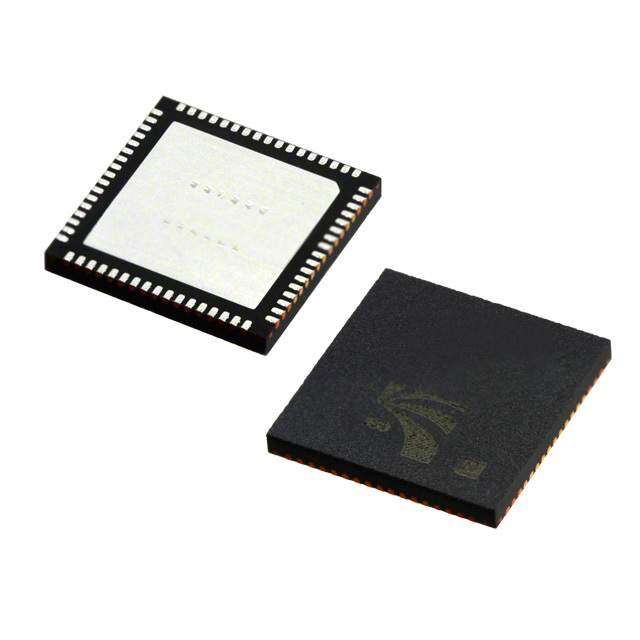ICGOO在线商城 > 射频/IF 和 RFID > RF 收发器 IC > CC2530F256RHAT
- 型号: CC2530F256RHAT
- 制造商: Texas Instruments
- 库位|库存: xxxx|xxxx
- 要求:
| 数量阶梯 | 香港交货 | 国内含税 |
| +xxxx | $xxxx | ¥xxxx |
查看当月历史价格
查看今年历史价格
CC2530F256RHAT产品简介:
ICGOO电子元器件商城为您提供CC2530F256RHAT由Texas Instruments设计生产,在icgoo商城现货销售,并且可以通过原厂、代理商等渠道进行代购。 CC2530F256RHAT价格参考。Texas InstrumentsCC2530F256RHAT封装/规格:RF 收发器 IC, IC 射频 TxRx + MCU 802.15.4 Zigbee® 2.4GHz 40-VFQFN 裸露焊盘。您可以下载CC2530F256RHAT参考资料、Datasheet数据手册功能说明书,资料中有CC2530F256RHAT 详细功能的应用电路图电压和使用方法及教程。
Texas Instruments(德州仪器)的CC2530F256RHAT是一款RF收发器IC,主要应用于低功耗无线通信领域。该芯片集成了高性能2.4GHz RF收发器和增强型8051微控制器内核,支持IEEE 802.15.4标准和ZigBee协议栈,适用于多种物联网(IoT)应用场景。 主要应用场景: 1. 智能家居: CC2530F256RHAT广泛用于智能家居设备中,如智能门锁、智能照明系统、温控器等。它能够实现设备之间的低功耗、可靠通信,支持多节点网络拓扑结构,确保家庭自动化系统的稳定性和扩展性。 2. 智能电网: 在智能电网应用中,该芯片可用于电表、水表、气表等智能计量设备的数据采集与传输。通过无线通信技术,实现远程抄表和实时监控,提高能源管理效率,降低运营成本。 3. 工业自动化: 工业环境中,CC2530F256RHAT可以用于传感器网络、无线控制模块等设备。它支持多跳路由和自组织网络功能,能够在复杂的工业环境下提供可靠的无线通信,适用于工厂自动化、设备监控等领域。 4. 医疗保健: 在医疗领域,该芯片可用于可穿戴健康监测设备,如心率监测器、血糖仪等。它具备低功耗特性,延长了电池寿命,同时支持数据的实时传输,方便医生远程监控患者健康状况。 5. 农业物联网: 农业物联网应用中,CC2530F256RHAT可用于环境监测、灌溉控制系统等。通过部署大量传感器节点,实时采集土壤湿度、温度等数据,并通过无线网络传输至中央控制系统,实现精准农业管理。 总之,CC2530F256RHAT凭借其低功耗、高集成度和可靠性,成为众多无线通信应用的理想选择,特别是在需要低功耗、长距离传输和多节点网络的场景中表现出色。
| 参数 | 数值 |
| A/D位大小 | 12 bit |
| 产品目录 | |
| 描述 | IC SOC IEEE 802.15.4/ZIG 40VQFNRF片上系统 - SoC 2nd Gen SOC Solution |
| 产品分类 | RF 收发器集成电路 - IC |
| 品牌 | Texas Instruments |
| 产品手册 | |
| 产品图片 |
|
| rohs | 符合RoHS无铅 / 符合限制有害物质指令(RoHS)规范要求 |
| 产品系列 | 嵌入式处理器和控制器,RF片上系统 - SoC,Texas Instruments CC2530F256RHAT- |
| mouser_ship_limit | 此产品可能需要其他文件才能从美国出口。 |
| 数据手册 | |
| 产品型号 | CC2530F256RHAT |
| PCN封装 | |
| PCN设计/规格 | |
| 产品培训模块 | http://www.digikey.cn/PTM/IndividualPTM.page?site=cn&lang=zhs&ptm=25419 |
| 产品种类 | RF片上系统 - SoC |
| 传输供电电流 | 33.5 mA |
| 其它名称 | 296-24547-6 |
| 制造商产品页 | http://www.ti.com/general/docs/suppproductinfo.tsp?distId=10&orderablePartNumber=CC2530F256RHAT |
| 功率-输出 | 8dBm |
| 包装 | Digi-Reel® |
| 单位重量 | 78.700 mg |
| 可用A/D通道 | 8 |
| 可编程输入/输出端数量 | 21 |
| 商标 | Texas Instruments |
| 处理器系列 | CC253 |
| 天线连接器 | PCB,表面贴装 |
| 存储容量 | 256Kb 闪存 |
| 安装风格 | SMD/SMT |
| 定时器数量 | 4 Timer |
| 封装 | Reel |
| 封装/外壳 | 40-VFQFN 裸露焊盘 |
| 封装/箱体 | VQFN-40 |
| 工作温度 | -40°C ~ 125°C |
| 工作温度范围 | - 40 C to + 125 C |
| 工作电源电压 | 2 V to 3.6 V |
| 工厂包装数量 | 250 |
| 应用 | - |
| 接口类型 | 2-Wire, SPI, UART |
| 接收供电电流 | 24.3 mA |
| 数据RAM大小 | 8 kB |
| 数据总线宽度 | 8 bit |
| 数据接口 | PCB,表面贴装 |
| 数据速率(最大值) | 250kbps |
| 最大数据速率 | 250 kb/s |
| 标准包装 | 1 |
| 核心 | 8051 |
| 灵敏度 | -88dBm |
| 片上ADC | Yes |
| 电压-电源 | 2 V ~ 3.6 V |
| 电流-传输 | 29mA |
| 电流-接收 | 29.6mA |
| 程序存储器大小 | 256 kB |
| 程序存储器类型 | Flash |
| 类型 | Zigbee |
| 系列 | CC2530 |
| 视频文件 | http://www.digikey.cn/classic/video.aspx?playerID=45066515001&width=966&height=546&playlistlisttabs=44831667001&featuredvideoid=45071683001 |
| 调制或协议 | 802.15.4 Zigbee |
| 输入/输出端数量 | 21 I/O |
| 输出功率 | 4.5 dBm |
| 频率 | 2.4GHz |

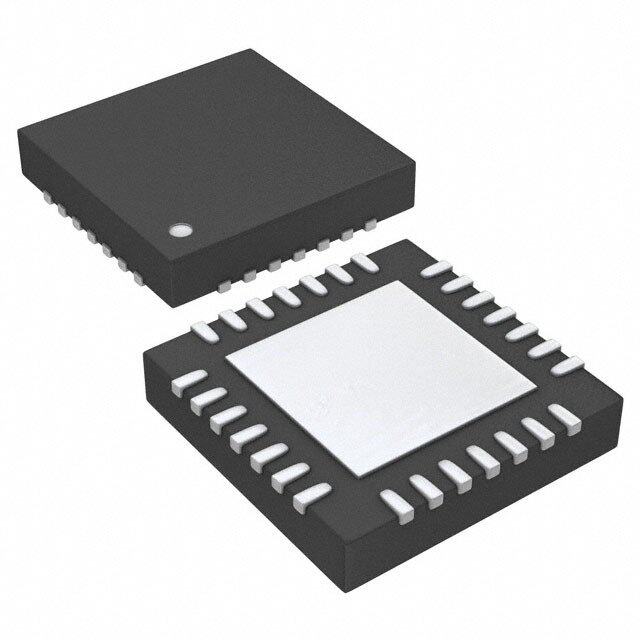
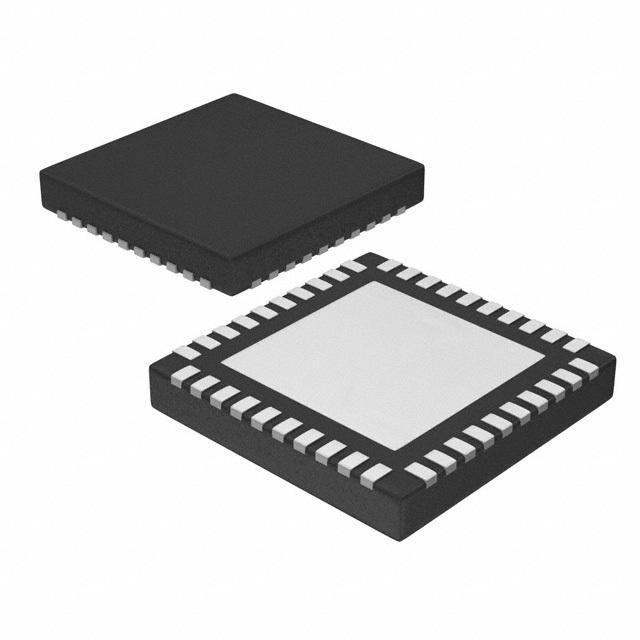
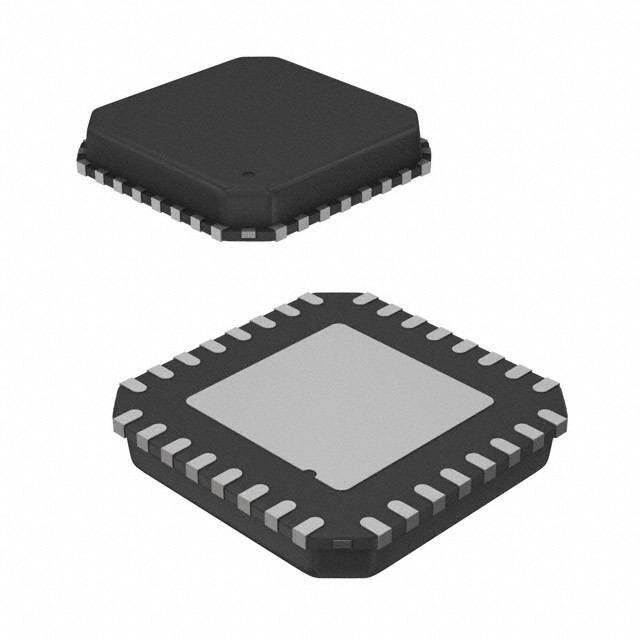
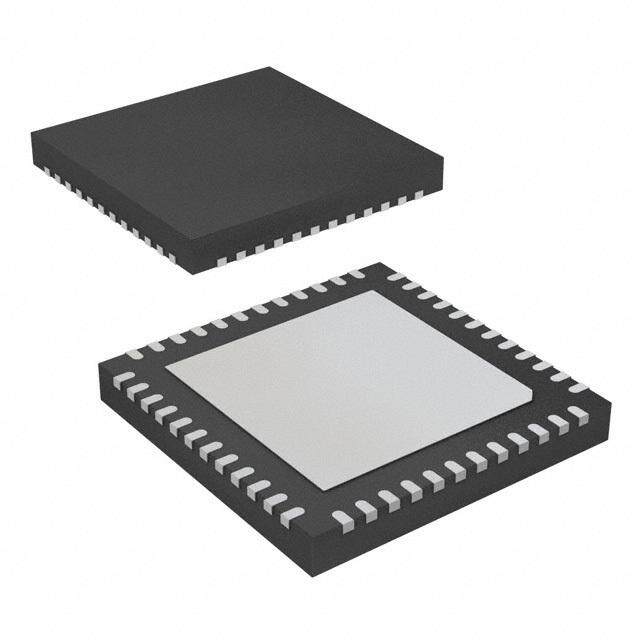

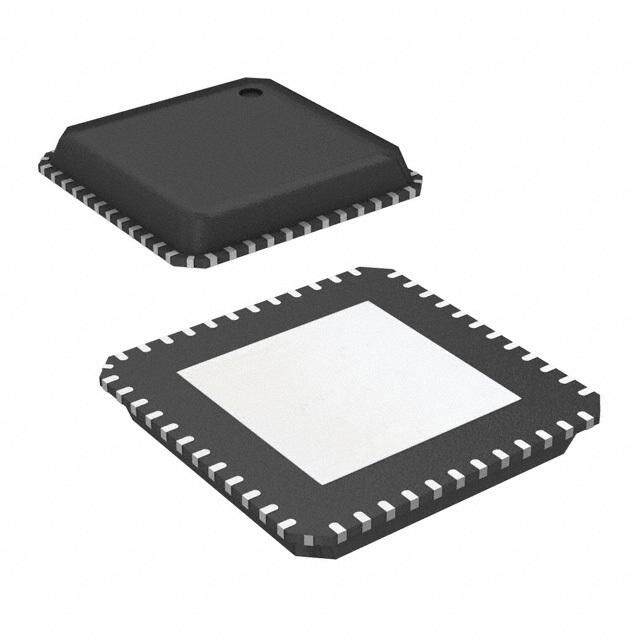

- 商务部:美国ITC正式对集成电路等产品启动337调查
- 曝三星4nm工艺存在良率问题 高通将骁龙8 Gen1或转产台积电
- 太阳诱电将投资9.5亿元在常州建新厂生产MLCC 预计2023年完工
- 英特尔发布欧洲新工厂建设计划 深化IDM 2.0 战略
- 台积电先进制程称霸业界 有大客户加持明年业绩稳了
- 达到5530亿美元!SIA预计今年全球半导体销售额将创下新高
- 英特尔拟将自动驾驶子公司Mobileye上市 估值或超500亿美元
- 三星加码芯片和SET,合并消费电子和移动部门,撤换高东真等 CEO
- 三星电子宣布重大人事变动 还合并消费电子和移动部门
- 海关总署:前11个月进口集成电路产品价值2.52万亿元 增长14.8%
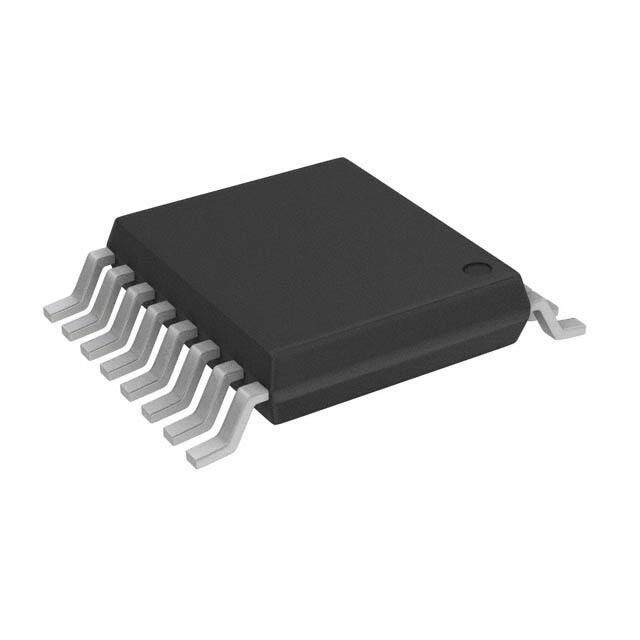
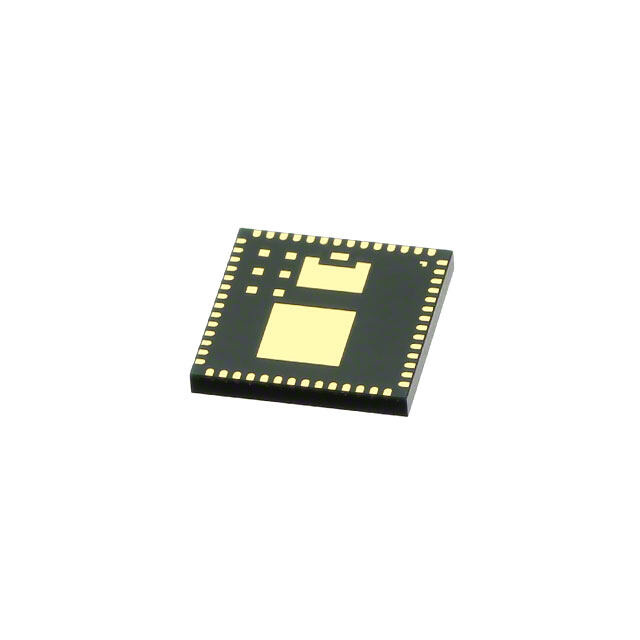
PDF Datasheet 数据手册内容提取
CC2530F32, CC2530F64 CC2530F128, CC2530F256 www.ti.com SWRS081B–APRIL2009–REVISEDFEBRUARY2011 A True System-on-Chip Solution for 2.4-GHz IEEE802.15.4 and ZigBee Applications CheckforSamples:CC2530F32,CC2530F64,CC2530F128,CC2530F256 FEATURES – IEEE802.15.4MACTimer,General-Purpose 1 • RF/Layout Timers(One16-Bit,Two8-Bit) 2345 – 2.4-GHzIEEE802.15.4CompliantRF – IRGenerationCircuitry Transceiver – 32-kHzSleepTimerWithCapture – ExcellentReceiverSensitivityand – CSMA/CAHardwareSupport RobustnesstoInterference – AccurateDigitalRSSI/LQISupport – ProgrammableOutputPowerUpto4.5dBm – BatteryMonitorandTemperatureSensor – VeryFewExternalComponents – 12-BitADCWithEightChannelsand – OnlyaSingleCrystalNeededfor ConfigurableResolution AsynchronousNetworks – AESSecurityCoprocessor – 6-mm ×6-mmQFN40Package – TwoPowerfulUSARTsWithSupportfor – SuitableforSystemsTargetingCompliance SeveralSerialProtocols WithWorldwideRadio-Frequency – 21General-PurposeI/OPins Regulations:ETSIEN300328andEN300 (19×4mA,2 ×20mA) 440(Europe),FCCCFR47Part15(US)and – WatchdogTimer ARIBSTD-T-66(Japan) • DevelopmentTools • LowPower – CC2530DevelopmentKit – Active-ModeRX(CPUIdle):24mA – CC2530ZigBee® DevelopmentKit – ActiveModeTXat1dBm(CPUIdle):29mA – CC2530RemoTI™DevelopmentKitfor – PowerMode1(4 μsWake-Up):0.2mA RF4CE – PowerMode2(SleepTimerRunning):1 μA – SmartRF™Software – PowerMode3(ExternalInterrupts):0.4μA – PacketSniffer – WideSupply-VoltageRange(2V–3.6V) – IAREmbeddedWorkbench™Available • Microcontroller – High-PerformanceandLow-Power8051 APPLICATIONS MicrocontrollerCoreWithCodePrefetch • 2.4-GHzIEEE802.15.4Systems – 32-,64-,128-,or256-KB • RF4CERemoteControlSystems(64-KBFlash In-System-ProgrammableFlash andHigher) – 8-KBRAMWithRetentioninAllPower • ZigBeeSystems(256-KBFlash) Modes • Home/BuildingAutomation – HardwareDebugSupport • LightingSystems • IndustrialControlandMonitoring • Peripherals • Low-PowerWirelessSensorNetworks – PowerfulFive-ChannelDMA • ConsumerElectronics • HealthCare – IntegratedHigh-PerformanceOp-Ampand Ultralow-PowerComparator 1 Pleasebeawarethatanimportantnoticeconcerningavailability,standardwarranty,anduseincriticalapplicationsofTexas Instrumentssemiconductorproductsanddisclaimerstheretoappearsattheendofthisdatasheet. RemoTI,SmartRF,Z-StackaretrademarksofTexasInstruments. 2 IAREmbeddedWorkbenchisatrademarkofIARSystemsAB. 3 ZigBeeisaregisteredtrademarkoftheZigBeeAlliance. 4 Allothertrademarksarethepropertyoftheirrespectiveowners. 5 PRODUCTIONDATAinformationiscurrentasofpublicationdate. ©2009–2011,TexasInstrumentsIncorporated Products conform to specifications per the terms of the Texas Instruments standard warranty. Production processing does not necessarilyincludetestingofallparameters.
CC2530F32, CC2530F64 CC2530F128, CC2530F256 SWRS081B–APRIL2009–REVISEDFEBRUARY2011 www.ti.com DESCRIPTION The CC2530 is a true system-on-chip (SoC) solution for IEEE 802.15.4, Zigbee and RF4CE applications. It enables robust network nodes to be built with very low total bill-of-material costs. The CC2530 combines the excellent performance of a leading RF transceiver with an industry-standard enhanced 8051 MCU, in-system programmable flash memory, 8-KB RAM, and many other powerful features. The CC2530 comes in four different flash versions: CC2530F32/64/128/256, with 32/64/128/256 KB of flash memory, respectively. The CC2530 has various operating modes, making it highly suited for systems where ultralow power consumption is required. Shorttransitiontimesbetweenoperatingmodesfurtherensurelowenergyconsumption. Combined with the industry-leading and golden-unit-status ZigBee protocol stack ( Z-Stack™) from Texas Instruments,theCC2530F256providesarobustandcompleteZigBeesolution. Combined with the golden-unit-status RemoTI stack from Texas Instruments, the CC2530F64 and higher provide arobustandcompleteZigBeeRF4CEremote-controlsolution. 2 SubmitDocumentationFeedback ©2009–2011,TexasInstrumentsIncorporated ProductFolderLink(s):CC2530F32 CC2530F64CC2530F128 CC2530F256
CC2530F32, CC2530F64 CC2530F128, CC2530F256 www.ti.com SWRS081B–APRIL2009–REVISEDFEBRUARY2011 RESET_N RESET WATTICMHEDROG ONR-CEHGIPULVAOTLOTRAGE VDDCDO U(2P VL–3.6 V) XOSC_Q2 32-MHz POWER-ON RESET XOSC_Q1 CRYSTALOSC CLOCK MUX BROWN OUT and P2_4 32.768-kHz CALIBRATION P2_3 CRYSTALOSC SLEEPTIMER P2_2 DEBUG HIGH- 32-kHz P2_1 INTERFACE RSCP-EOESDC RC-OSC POWER MANAGEMENTCONTROLLER P2_0 P1_7 P1_6 8-KB SRAM P1_5 8051 CPU CORE P1_4 MEMORY P1_3 ARBITER P1_2 32/64/128/256-KB FLASH P1_1 DMA P1_0 P0_7 IRQ CTRL FLASH CTRL P0_6 P0_5 ANALOG P0_4 ER COMPARATOR RADIO REGISTERS L P0_3 OL P0_2 NTR OP-AMP CSMA/CASTROBE PROCESSOR P0_1 CO P0_0 I/O ENCRAYEPSTION RADIO DATAINTERFACE OL 12-BITDS DECRAYNPDTION NTR ADC O C H E DEMANODDUALGACTOR YNT MODULATOR RAM S F d n a O F FI USART0 USART1 RCEHCAEIINVE FREQUENCYSYNTHESIZER TRCAHNASINMIT TIMER 1 (16-Bit) TIMER 2 (IEEE 802.15.4 MACTIMER) RF_P RF_N DIGITAL ANALOG TIMER 3 (8-Bit) MIXED TIMER 4 (8-Bit) B0301-02 This integrated circuit can be damaged by ESD. Texas Instruments recommends that all integrated circuits be handled with appropriateprecautions.Failuretoobserveproperhandlingandinstallationprocedurescancausedamage. ESDdamagecanrangefromsubtleperformancedegradationtocompletedevicefailure.Precisionintegratedcircuitsmaybemore susceptibletodamagebecauseverysmallparametricchangescouldcausethedevicenottomeetitspublishedspecifications. ©2009–2011,TexasInstrumentsIncorporated SubmitDocumentationFeedback 3 ProductFolderLink(s):CC2530F32 CC2530F64CC2530F128 CC2530F256
CC2530F32, CC2530F64 CC2530F128, CC2530F256 SWRS081B–APRIL2009–REVISEDFEBRUARY2011 www.ti.com ABSOLUTE MAXIMUM RATINGS(1) MIN MAX UNIT Supplyvoltage Allsupplypinsmusthavethesamevoltage –0.3 3.9 V –0.3 VDD+0.3, Voltageonanydigitalpin V ≤3.9 InputRFlevel 10 dBm Storagetemperaturerange –40 125 °C Allpads,accordingtohuman-bodymodel,JEDECSTD22,methodA114 2 kV ESD(2) Accordingtocharged-devicemodel,JEDECSTD22,methodC101 500 V (1) StressesbeyondthoselistedunderAbsoluteMaximumRatingsmaycausepermanentdamagetothedevice.Thesearestressratings only,andfunctionaloperationofthedeviceattheseoranyotherconditionsbeyondthoseindicatedunderRecommendedOperating Conditionsisnotimplied.Exposuretoabsolute-maximum-ratedconditionsforextendedperiodsmayaffectdevicereliability. (2) CAUTION:ESDsensitivedevice.Precautionshouldbeusedwhenhandlingthedeviceinordertopreventpermanentdamage. RECOMMENDED OPERATING CONDITIONS MIN MAX UNIT Operatingambienttemperaturerange,T –40 125 °C A Operatingsupplyvoltage 2 3.6 V ELECTRICAL CHARACTERISTICS MeasuredonTexasInstrumentsCC2530EMreferencedesignwithT =25°CandVDD=3V,unlessotherwisenoted. A Boldfacelimitsapplyovertheentireoperatingrange,T =–40°Cto125°C,VDD=2Vto3.6V,andf =2394MHzto A c 2507MHz. PARAMETER TESTCONDITIONS MIN TYP MAX UNIT Digitalregulatoron.16-MHzRCOSCrunning.Noradio,crystals,orperipheralsactive. 3.4 mA MediumCPUactivity:normalflashaccess(1),noRAMaccess 32-MHzXOSCrunning.Noradioorperipheralsactive. 6.5 8.9 mA MediumCPUactivity:normalflashaccess(1),noRAMaccess 32-MHzXOSCrunning,radioinRXmode,–50-dBminputpower,noperipheralsactive,CPU 20.5 mA idle 32-MHzXOSCrunning,radioinRXmodeat-100-dBminputpower(waitingforsignal),no 24.3 29.6 mA Corecurrent peripheralsactive,CPUidle Icore consumption 32-MHzXOSCrunning,radioinTXmode,1-dBmoutputpower,noperipheralsactive,CPUidle 28.7 mA 32-MHzXOSCrunning,radioinTXmode,4.5-dBmoutputpower,noperipheralsactive,CPU 33.5 39.6 mA idle Powermode1.Digitalregulatoron;16-MHzRCOSCand32-MHzcrystaloscillatoroff; 0.2 0.3 mA 32.768-kHzXOSC,POR,BODandsleeptimeractive;RAMandregisterretention Powermode2.Digitalregulatoroff;16-MHzRCOSCand32-MHzcrystaloscillatoroff; 1 2 μA 32.768-kHzXOSC,POR,andsleeptimeractive;RAMandregisterretention Powermode3.Digitalregulatoroff;noclocks;PORactive;RAMandregisterretention 0.4 1 μA PeripheralCurrentConsumption(AddstocorecurrentIcoreforeachperipheralunitactivated) Timer1 Timerrunning,32-MHzXOSCused 90 μA Timer2 Timerrunning,32-MHzXOSCused 90 μA Timer3 Timerrunning,32-MHzXOSCused 60 μA Iperi Timer4 Timerrunning,32-MHzXOSCused 70 μA Sleeptimer Including32.753-kHzRCOSC 0.6 μA ADC Whenconverting 1.2 mA Erase 1 mA Flash Burstwritepeakcurrent 6 mA (1) Normalflashaccessmeansthatthecodeusedexceedsthecachestorage,socachemisseshappenfrequently. GENERAL CHARACTERISTICS MeasuredonTexasInstrumentsCC2530EMreferencedesignwithT =25°CandVDD=3V,unlessotherwisenoted. A PARAMETER TESTCONDITIONS MIN TYP MAX UNIT WAKE-UPANDTIMING 4 SubmitDocumentationFeedback ©2009–2011,TexasInstrumentsIncorporated ProductFolderLink(s):CC2530F32 CC2530F64CC2530F128 CC2530F256
CC2530F32, CC2530F64 CC2530F128, CC2530F256 www.ti.com SWRS081B–APRIL2009–REVISEDFEBRUARY2011 GENERAL CHARACTERISTICS (continued) MeasuredonTexasInstrumentsCC2530EMreferencedesignwithT =25°CandVDD=3V,unlessotherwisenoted. A PARAMETER TESTCONDITIONS MIN TYP MAX UNIT Digitalregulatoron,16-MHzRCOSCand32-MHzcrystal Powermode1→active 4 μs oscillatoroff.Start-upof16-MHzRCOSC Digitalregulatoroff,16-MHzRCOSCand32-MHzcrystal Powermode2or3→active 0.1 ms oscillatoroff.Start-upofregulatorand16-MHzRCOSC Initiallyrunningon16-MHzRCOSC,with32-MHzXOSC 0.5 ms Active→TXorRX OFF With32-MHzXOSCinitiallyon 192 μs RX/TXandTX/RXturnaround 192 μs RADIOPART Programmablein1-MHzsteps,5MHzbetweenchannels RFfrequencyrange 2394 2507 MHz forcompliancewith[1] Radiobaudrate Asdefinedby[1] 250 kbps Radiochiprate Asdefinedby[1] 2 MChip/s Flasherasecycles 20 kcycles Flashpagesize 2 KB ©2009–2011,TexasInstrumentsIncorporated SubmitDocumentationFeedback 5 ProductFolderLink(s):CC2530F32 CC2530F64CC2530F128 CC2530F256
CC2530F32, CC2530F64 CC2530F128, CC2530F256 SWRS081B–APRIL2009–REVISEDFEBRUARY2011 www.ti.com RF RECEIVE SECTION MeasuredonTexasInstrumentsCC2530EMreferencedesignwithT =25°C,VDD=3V,andf =2440MHz,unless A c otherwisenoted. Boldfacelimitsapplyovertheentireoperatingrange,T =–40°Cto125°C,VDD=2Vto3.6V,andf =2394MHzto A c 2507MHz. PARAMETER TESTCONDITIONS MIN TYP MAX UNIT PER=1%,asspecifiedby[1] –97 –92 Receiversensitivity dBm [1]requires–85dBm –88 PER=1%,asspecifiedby[1] Saturation(maximuminputlevel) 10 dBm [1]requires–20dBm Wantedsignal–82dBm,adjacentmodulatedchannelat Adjacent-channelrejection,5-MHz 5MHz,PER=1%,asspecifiedby[1]. 49 dB channelspacing [1]requires0dB Wantedsignal–82dBm,adjacentmodulatedchannel Adjacent-channelrejection,–5-MHz at–5MHz,PER=1%,asspecifiedby[1]. 49 dB channelspacing [1]requires0dB Wantedsignal–82dBm,adjacentmodulatedchannelat Alternate-channelrejection,10-MHz 10MHz,PER=1%,asspecifiedby[1] 57 dB channelspacing [1]requires30dB Wantedsignal–82dBm,adjacentmodulatedchannel Alternate-channelrejection,–10-MHz at–10MHz,PER=1%,asspecifiedby[1] 57 dB channelspacing [1]requires30dB Channelrejection Wantedsignalat–82dBm.UndesiredsignalisanIEEE ≥20MHz 802.15.4modulatedchannel,steppedthroughallchannels 57 dB ≤–20MHz from2405to2480MHz.SignallevelforPER=1%. 57 Wantedsignalat–82dBm.Undesiredsignalis802.15.4 Co-channelrejection modulatedatthesamefrequencyasthedesiredsignal.Signal –3 dB levelforPER=1%. Blocking/desensitization 5MHzfrombandedge Wantedsignal3dBabovethesensitivitylevel,CWjammer, –33 10MHzfrombandedge PER=1%.MeasuredaccordingtoEN300440class2. –33 20MHzfrombandedge –32 50MHzfrombandedge –31 dBm –5MHzfrombandedge –35 –10MHzfrombandedge –35 –20MHzfrombandedge –34 –50MHzfrombandedge –34 Spuriousemission.Onlylargestspurious emissionstatedwithineachband. Conductedmeasurementwitha50-Ωsingle-endedload. 30MHz–1000MHz SuitableforsystemstargetingcompliancewithEN300328, < dBm 1GHz–12.75GHz EN300440,FCCCFR47Part15andARIBSTD-T-66. –80 –57 Frequencyerrortolerance(1) [1]requiresminimum80ppm ±150 ppm Symbolrateerrortolerance(2) [1]requiresminimum80ppm ±1000 ppm (1) DifferencebetweencenterfrequencyofthereceivedRFsignalandlocaloscillatorfrequency. (2) Differencebetweenincomingsymbolrateandtheinternallygeneratedsymbolrate 6 SubmitDocumentationFeedback ©2009–2011,TexasInstrumentsIncorporated ProductFolderLink(s):CC2530F32 CC2530F64CC2530F128 CC2530F256
CC2530F32, CC2530F64 CC2530F128, CC2530F256 www.ti.com SWRS081B–APRIL2009–REVISEDFEBRUARY2011 RF TRANSMIT SECTION MeasuredonTexasInstrumentsCC2530EMreferencedesignwithT =25°C,VDD=3Vandf =2440MHz,unless A c otherwisenoted. Boldfacelimitsapplyovertheentireoperatingrange,T =–40°Cto125°C,VDD=2Vto3.6Vandf =2394MHzto2507 A c MHz. PARAMETER TESTCONDITIONS MIN TYP MAX UNIT Deliveredtoasingle-ended50-Ωloadthroughabalunusing 0 4.5 8 Nominaloutputpower maximum-recommendedoutput-powersetting dBm –8 10 [1]requiresminimum–3dBm Programmableoutputpower 32 dB range Spuriousemissions Maxrecommendedoutputpowersetting(1) Measuredconducted 25MHz–1000MHz(outsiderestrictedbands) –60 accordingtostated 25MHz–2400MHz(withinFCCrestrictedbands) –60 regulations.Onlylargest 25MHz–1000MHz(withinETSIrestrictedbands) –60 spuriousemissionstated 1800–1900MHz(ETSIrestrictedband) –57 withineachband. 5150–5300MHz(ETSIrestrictedband) –55 dBm At2×fcand3×fc(FCCrestrictedband) –42 At2×fcand3×fc(ETSIEN300-440andEN300-328)(2) –31 1GHz–12.75GHz(outsiderestrictedbands) –53 At2483.5MHzandabove(FCCrestrictedband) f=2480MHz(3) c –42 Measuredasdefinedby[1]usingmaximum-recommended Errorvectormagnitude(EVM) output-powersetting 2% [1]requiresmaximum35%. DifferentialimpedanceasseenfromtheRFport(RF_PandRF_N) Optimumloadimpedance 69+j29 Ω towardstheantenna (1) TexasInstrumentsCC2530EMreferencedesignissuitableforsystemstargetingcompliancewithEN300328,EN300440,FCC CFR47Part15andARIBSTD-T-66. (2) Marginsforpassingconductedrequirementsatthethirdharmoniccanbeimprovedbyusingasimpleband-passfilterconnected betweenmatchingnetworkandRFconnector(1.8pFinparallelwith1.6nH);thisfiltermustbeconnectedtoagoodRFground. (3) MarginsforpassingFCCrequirementsat2483.5MHzandabovewhentransmittingat2480MHzcanbeimprovedbyusingalower output-powersettingorhavinglessthan100%dutycycle. ©2009–2011,TexasInstrumentsIncorporated SubmitDocumentationFeedback 7 ProductFolderLink(s):CC2530F32 CC2530F64CC2530F128 CC2530F256
CC2530F32, CC2530F64 CC2530F128, CC2530F256 SWRS081B–APRIL2009–REVISEDFEBRUARY2011 www.ti.com 32-MHz CRYSTAL OSCILLATOR MeasuredonTexasInstrumentsCC2530EMreferencedesignwithT =25°CandVDD=3V,unlessotherwisenoted. A PARAMETER TESTCONDITIONS MIN TYP MAX UNIT Crystalfrequency 32 MHz Crystalfrequencyaccuracy requirement(1) –40 40 ppm ESR Equivalentseriesresistance 6 60 Ω C Crystalshuntcapacitance 1 7 pF 0 C Crystalloadcapacitance 10 16 pF L Start-uptime 0.3 ms Thecrystaloscillatormustbeinpowerdownfora guardtimebeforeitisusedagain.This Power-downguardtime requirementisvalidforallmodesofoperation.The 3 ms needforpower-downguardtimecanvarywith crystaltypeandload. (1) Includingagingandtemperaturedependency,asspecifiedby[1] 32.768-kHz CRYSTAL OSCILLATOR MeasuredonTexasInstrumentsCC2530EMreferencedesignwithT =25°CandVDD=3V,unlessotherwisenoted. A PARAMETER TESTCONDITIONS MIN TYP MAX UNIT Crystalfrequency 32.768 kHz Crystalfrequencyaccuracy requirement(1) –40 40 ppm ESR Equivalentseriesresistance 40 130 kΩ C Crystalshuntcapacitance 0.9 2 pF 0 C Crystalloadcapacitance 12 16 pF L Start-uptime 0.4 s (1) Includingagingandtemperaturedependency,asspecifiedby[1] 32-kHz RC OSCILLATOR MeasuredonTexasInstrumentsCC2530EMreferencedesignwithT =25°CandVDD=3V,unlessotherwisenoted. A PARAMETER TESTCONDITIONS MIN TYP MAX UNIT Calibratedfrequency(1) 32.753 kHz Frequencyaccuracyaftercalibration ±0.2% Temperaturecoefficient(2) 0.4 %/°C Supply-voltagecoefficient(3) 3 %/V Calibrationtime(4) 2 ms (1) Thecalibrated32-kHzRCoscillatorfrequencyisthe32-MHzXTALfrequencydividedby977. (2) Frequencydriftwhentemperaturechangesaftercalibration (3) Frequencydriftwhensupplyvoltagechangesaftercalibration (4) Whenthe32-kHzRCoscillatorisenabled,itiscalibratedwhenaswitchfromthe16-MHzRCoscillatortothe32-MHzcrystaloscillator isperformedwhileSLEEPCMD.OSC32K_CALDISis0. 8 SubmitDocumentationFeedback ©2009–2011,TexasInstrumentsIncorporated ProductFolderLink(s):CC2530F32 CC2530F64CC2530F128 CC2530F256
CC2530F32, CC2530F64 CC2530F128, CC2530F256 www.ti.com SWRS081B–APRIL2009–REVISEDFEBRUARY2011 16-MHz RC OSCILLATOR MeasuredonTexasInstrumentsCC2530EMreferencedesignwithT =25°CandVDD=3V,unlessotherwisenoted. A PARAMETER TESTCONDITIONS MIN TYP MAX UNIT Frequency(1) 16 MHz Uncalibratedfrequencyaccuracy ±18% Calibratedfrequencyaccuracy ±0.6% ±1% Start-uptime 10 μs Initialcalibrationtime(2) 50 μs (1) Thecalibrated16-MHzRCoscillatorfrequencyisthe32-MHzXTALfrequencydividedby2. (2) Whenthe16-MHzRCoscillatorisenabled,itiscalibratedwhenaswitchfromthe16-MHzRCoscillatortothe32-MHzcrystaloscillator isperformedwhileSLEEPCMD.OSC_PDissetto0. RSSI/CCA CHARACTERISTICS MeasuredonTexasInstrumentsCC2530EMreferencedesignwithT =25°CandVDD=3V,unlessotherwisenoted. A PARAMETER TESTCONDITIONS MIN TYP MAX UNIT RSSIrange 100 dB AbsoluteuncalibratedRSSI/CCAaccuracy ±4 dB RSSI/CCAoffset(1) 73 dB Stepsize(LSBvalue) 1 dB (1) RealRSSI=Registervalue–offset FREQEST CHARACTERISTICS MeasuredonTexasInstrumentsCC2530EMreferencedesignwithT =25°CandVDD=3V,unlessotherwisenoted. A PARAMETER TESTCONDITIONS MIN TYP MAX UNIT FREQESTrange ±250 kHz FREQESTaccuracy ±40 kHz FREQESToffset(1) 20 kHz Stepsize(LSBvalue) 7.8 kHz (1) RealFREQEST=Registervalue–offset FREQUENCY SYNTHESIZER CHARACTERISTICS MeasuredonTexasInstrumentsCC2530EMreferencedesignwithT =25°C,VDD=3Vandf =2440MHz,unless A c otherwisenoted. PARAMETER TESTCONDITIONS MIN TYP MAX UNIT At±1-MHzoffsetfromcarrier –110 Phasenoise,unmodulatedcarrier At±2-MHzoffsetfromcarrier –117 dBc/Hz At±5-MHzoffsetfromcarrier –122 ANALOG TEMPERATURE SENSOR MeasuredonTexasInstrumentsCC2530EMreferencedesignwithT =25°CandVDD=3V,unlessotherwisenoted. A PARAMETER TESTCONDITIONS MIN TYP MAX UNIT Outputat25°C 1480 12-bitADC Temperaturecoefficient 4.5 /1°C Voltagecoefficient 1 /0.1V MeasuredusingintegratedADCusing Initialaccuracywithoutcalibration internalbandgapvoltagereferenceand ±10 °C Accuracyusing1-pointcalibration(entire maximumresolution ±5 °C temperaturerange) Currentconsumptionwhenenabled(ADC 0.5 mA currentnotincluded) ©2009–2011,TexasInstrumentsIncorporated SubmitDocumentationFeedback 9 ProductFolderLink(s):CC2530F32 CC2530F64CC2530F128 CC2530F256
CC2530F32, CC2530F64 CC2530F128, CC2530F256 SWRS081B–APRIL2009–REVISEDFEBRUARY2011 www.ti.com OP-AMP CHARACTERISTICS T =25°C,VDD=3V.AllmeasurementresultsareobtainedusingtheCC2530referencedesignspost-calibration. A PARAMETER TESTCONDITIONS MIN TYP MAX UNIT ChoppingConfiguration,RegisterAPCFG=0x07,OPAMPMC=0x03,OPAMPC=0x01 Outputmaximumvoltage VDD–0.07 V Outputminimumvoltage 0.07 V Open-loopgain 108 dB Gain-bandwidthproduct 2 MHz Slewrate 107 V/μs Inputmaximumvoltage VDD+0.13 V Intputminimumvoltage –55 mV Inputoffsetvoltage 40 μV CMRR Common-moderejectionratio 90 dB Supplycurrent 0.4 mA f=0.01Hzto1Hz 1.1 Inputnoisevoltage nV/√(Hz) f=0.1Hzto10Hz 1.7 Non-ChoppingConfiguration,RegisterAPCFG=0x07,OPAMPMC=0x00,OPAMPC=0x01 Outputmaximumvoltage VDD–0.07 V Outputminimumvoltage 0.07 V Open-loopgain 108 dB Gain-bandwidthproduct 2 MHz Slewrate 107 V/μs Inputmaximumvoltage VDD+0.13 V Intputminimumvoltage –55 mV Inputoffsetvoltage 0.8 mV CMRR Common-moderejectionratio 90 dB Supplycurrent 0.4 mA f=0.01Hzto1Hz 60 Inputnoisevoltage nV/√(Hz) f=0.1Hzto10Hz 65 COMPARATOR CHARACTERISTICS T =25°C,VDD=3V.AllmeasurementresultsareobtainedusingtheCC2530referencedesigns,post-calibration. A PARAMETER TESTCONDITIONS MIN TYP MAX UNIT Common-modemaximumvoltage VDD V Common-modeminimumvoltage –0.3 Inputoffsetvoltage 1 mV Offsetvstemperature 16 µV/°C Offsetvsoperatingvoltage 4 mV/V Supplycurrent 230 nA Hysteresis 0.15 mV 10 SubmitDocumentationFeedback ©2009–2011,TexasInstrumentsIncorporated ProductFolderLink(s):CC2530F32 CC2530F64CC2530F128 CC2530F256
CC2530F32, CC2530F64 CC2530F128, CC2530F256 www.ti.com SWRS081B–APRIL2009–REVISEDFEBRUARY2011 ADC CHARACTERISTICS T =25°CandVDD=3V,unlessotherwisenoted. A PARAMETER TESTCONDITIONS MIN TYP MAX UNIT Inputvoltage VDDisvoltageonAVDD5pin 0 VDD V Externalreferencevoltage VDDisvoltageonAVDD5pin 0 VDD V Externalreferencevoltagedifferential VDDisvoltageonAVDD5pin 0 VDD V Inputresistance,signal Using4-MHzclockspeed 197 kΩ Full-scalesignal(1) Peak-to-peak,defines0dBFS 2.97 V Single-endedinput,7-bitsetting 5.7 Single-endedinput,9-bitsetting 7.5 Single-endedinput,10-bitsetting 9.3 Single-endedinput,12-bitsetting 10.8 ENOB(1) Effectivenumberofbits bits Differentialinput,7-bitsetting 6.5 Differentialinput,9-bitsetting 8.3 Differentialinput,10-bitsetting 10.0 Differentialinput,12-bitsetting 11.5 Usefulpowerbandwidth 7-bitsetting,bothsingleanddifferential 0–20 kHz Single-endedinput,12-bitsetting,–6dBFS –75.2 THD(1) Totalharmonicdistortion dB Differentialinput,12-bitsetting,–6dBFS –86.6 Single-endedinput,12-bitsetting 70.2 Differentialinput,12-bitsetting 79.3 Signaltononharmonicratio(1) dB Single-endedinput,12-bitsetting,–6dBFS 78.8 Differentialinput,12-bitsetting,–6dBFS 88.9 Differentialinput,12-bitsetting,1-kHzsine(0dBFS), CMRR Common-moderejectionratio >84 dB limitedbyADCresolution Single-endedinput,12-bitsetting,1-kHzsine(0dBFS), Crosstalk >84 dB limitedbyADCresolution Offset Midscale –3 mV Gainerror 0.68 % 12-bitsetting,mean 0.05 DNL(1) Differentialnonlinearity LSB 12-bitsetting,maximum 0.9 12-bitsetting,mean 4.6 INL(1) Integralnonlinearity LSB 12-bitsetting,maximum 13.3 Single-endedinput,7-bitsetting 35.4 Single-endedinput,9-bitsetting 46.8 Single-endedinput,10-bitsetting 57.5 SINAD(1) Single-endedinput,12-bitsetting 66.6 Signal-to-noise-and-distortion dB (–THD+N) Differentialinput,7-bitsetting 40.7 Differentialinput,9-bitsetting 51.6 Differentialinput,10-bitsetting 61.8 Differentialinput,12-bitsetting 70.8 7-bitsetting 20 9-bitsetting 36 Conversiontime μs 10-bitsetting 68 12-bitsetting 132 Powerconsumption 1.2 mA Internalreferencevoltage 1.15 V InternalreferenceVDDcoefficient 4 mV/V Internalreferencetemperaturecoefficient 0.4 mV/10°C (1) Measuredwith300-Hzsine-waveinputandVDDasreference. ©2009–2011,TexasInstrumentsIncorporated SubmitDocumentationFeedback 11 ProductFolderLink(s):CC2530F32 CC2530F64CC2530F128 CC2530F256
CC2530F32, CC2530F64 CC2530F128, CC2530F256 SWRS081B–APRIL2009–REVISEDFEBRUARY2011 www.ti.com CONTROL INPUT AC CHARACTERISTICS T =–40°Cto125°C,VDD=2Vto3.6V,unlessotherwisenoted. A PARAMETER TESTCONDITIONS MIN TYP MAX UNIT Systemclock,f Theundividedsystemclockis32MHzwhencrystaloscillatorisused. SYSCLK t =1/f Theundividedsystemclockis16MHzwhencalibrated16-MHzRC 16 32 MHz SYSCLK SYSCLK oscillatorisused. Seeitem1,Figure1.Thisistheshortestpulsethatisrecognizedas acompleteresetpinrequest.Notethatshorterpulsesmaybe RESET_Nlowduration 1 μs recognizedbutmightnotleadtocompleteresetofallmoduleswithin thechip. Seeitem2,Figure1.Thisistheshortestpulsethatisrecognizedas Interruptpulseduration 20 ns aninterruptrequest. RESET_N 1 2 Px.n T0299-01 Figure1. ControlInputACCharacteristics 12 SubmitDocumentationFeedback ©2009–2011,TexasInstrumentsIncorporated ProductFolderLink(s):CC2530F32 CC2530F64CC2530F128 CC2530F256
CC2530F32, CC2530F64 CC2530F128, CC2530F256 www.ti.com SWRS081B–APRIL2009–REVISEDFEBRUARY2011 SPI AC CHARACTERISTICS T =–40°Cto125°C,VDD=2Vto3.6V A PARAMETER TESTCONDITIONS MIN TYP MAX UNIT Master,RXandTX 250 t SCKperiod ns 1 Slave,RXandTX 250 SCKdutycycle Master 50% Master 63 t SSNlowtoSCK ns 2 Slave 63 Master 63 t SCKtoSSNhigh ns 3 Slave 63 t MOSIearlyout Master,load=10pF 7 ns 4 t MOSIlateout Master,load=10pF 10 ns 5 t MISOsetup Master 90 ns 6 t MISOhold Master 10 ns 7 SCKdutycycle Slave 50% ns t MOSIsetup Slave 35 ns 10 t MOSIhold Slave 10 ns 11 t MISOlateout Slave,load=10pF 95 ns 9 Master,TXonly 8 Master,RXandTX 4 Operatingfrequency MHz Slave,RXonly 8 Slave,RXandTX 4 SCK t t 2 3 SSN t t 4 5 MOSI D0 X D1 t t 6 7 MISO X D0 X T0478-01 Figure2. SPIMasterACCharacteristics ©2009–2011,TexasInstrumentsIncorporated SubmitDocumentationFeedback 13 ProductFolderLink(s):CC2530F32 CC2530F64CC2530F128 CC2530F256
CC2530F32, CC2530F64 CC2530F128, CC2530F256 SWRS081B–APRIL2009–REVISEDFEBRUARY2011 www.ti.com SCK t t 2 3 SSN t t 8 9 MISO D0 X D1 t t 10 11 MOSI X D0 X T0479-01 Figure3. SPISlaveACCharacteristics 14 SubmitDocumentationFeedback ©2009–2011,TexasInstrumentsIncorporated ProductFolderLink(s):CC2530F32 CC2530F64CC2530F128 CC2530F256
CC2530F32, CC2530F64 CC2530F128, CC2530F256 www.ti.com SWRS081B–APRIL2009–REVISEDFEBRUARY2011 DEBUG INTERFACE AC CHARACTERISTICS T =–40°Cto125°C,VDD=2Vto3.6V,unlessotherwisenoted. A PARAMETER TESTCONDITIONS MIN TYP MAX UNIT f Debugclockfrequency(seeFigure4) 12 MHz clk_dbg t Allowedhighpulseonclock(seeFigure4) 35 ns 1 t Allowedlowpulseonclock(seeFigure4) 35 ns 2 EXT_RESET_Nlowtofirstfallingedgeon t 167 ns 3 debugclock(seeFigure5) FallingedgeonclocktoEXT_RESET_Nhigh t 83 ns 4 (seeFigure5) EXT_RESET_Nhightofirstdebugcommand t 83 ns 5 (seeFigure5) t Debugdatasetup(seeFigure6) 2 ns 6 t Debugdatahold(seeFigure6) 4 ns 7 t Clock-to-datadelay(seeFigure6) Load=10pF 30 ns 8 Time DEBUG_CLK P2_2 t t 1 2 1/f clk_dbg T0436-01 Figure4. DebugClock– BasicTiming Time DEBUG_CLK P2_2 RESET_N t t t 3 4 5 T0437-01 Figure5. DataSetupandHoldTiming ©2009–2011,TexasInstrumentsIncorporated SubmitDocumentationFeedback 15 ProductFolderLink(s):CC2530F32 CC2530F64CC2530F128 CC2530F256
CC2530F32, CC2530F64 CC2530F128, CC2530F256 SWRS081B–APRIL2009–REVISEDFEBRUARY2011 www.ti.com Time DEBUG_CLK P2_2 DEBUG_DATA (to CC253x) P2_1 DEBUG_DATA (from CC253x) P2_1 t t t 6 7 8 T0438-01 Figure6. DebugEnableTiming TIMER INPUTS AC CHARACTERISTICS T =–40°Cto125°C,VDD=2Vto3.6V,unlessotherwisenoted. A PARAMETER TESTCONDITIONS MIN TYP MAX UNIT Synchronizersdeterminetheshortestinputpulsethatcanbe t SYSCLK Inputcapturepulseduration recognized.Thesynchronizersoperateatthecurrentsystem 1.5 clockrate(16or32MHz). 16 SubmitDocumentationFeedback ©2009–2011,TexasInstrumentsIncorporated ProductFolderLink(s):CC2530F32 CC2530F64CC2530F128 CC2530F256
CC2530F32, CC2530F64 CC2530F128, CC2530F256 www.ti.com SWRS081B–APRIL2009–REVISEDFEBRUARY2011 DC CHARACTERISTICS T =25°C,VDD=3V,unlessotherwisenoted. A PARAMETER TESTCONDITIONS MIN TYP MAX UNIT Logic-0inputvoltage 0.5 V Logic-1inputvoltage 2.5 V Logic-0inputcurrent Inputequals0V –50 50 nA Logic-1inputcurrent InputequalsVDD –50 50 nA I/O-pinpullupandpulldownresistors 20 kΩ Logic-0outputvoltage,4-mApins Outputload4mA 0.5 V Logic-1outputvoltage,4-mApins Outputload4mA 2.4 V Logic-0outputvoltage,20-mApins Outputload20mA 0.5 V Logic-1outputvoltage,20-mApins Outputload20mA 2.4 V DEVICE INFORMATION PIN DESCRIPTIONS TheCC2530pinoutisshowninFigure7andashortdescriptionofthepinsfollows. CC2530 RHAPackage (Top View) 2 1 Q Q _ _ K K 2 2 3 3 C C S S L O O COUP VDD1 1_6 1_7 2_0 2_1 2_2 2_3/X 2_4/X VDD6 D D P P P P P P P A 40 39 38 37 36 35 34 33 32 31 GND 1 30 RBIAS GND 2 29 AVDD4 GND 3 28 AVDD1 GND 4 27 AVDD2 P1_5 5 GND 26 RF_N P1_4 6 Ground Pad 25 RF_P P1_3 7 24 AVDD3 P1_2 8 23 XOSC_Q2 P1_1 9 22 XOSC_Q1 DVDD2 10 21 AVDD5 11 12 13 14 15 16 17 18 19 20 0 7 6 5 4 3 2 1 0 N P1_ P0_ P0_ P0_ P0_ P0_ P0_ P0_ P0_ ET_ S E R P0076-02 NOTE: Theexposedgroundpadmustbeconnectedtoasolidgroundplane,asthisisthegroundconnectionforthechip. Figure7. PinoutTopView ©2009–2011,TexasInstrumentsIncorporated SubmitDocumentationFeedback 17 ProductFolderLink(s):CC2530F32 CC2530F64CC2530F128 CC2530F256
CC2530F32, CC2530F64 CC2530F128, CC2530F256 SWRS081B–APRIL2009–REVISEDFEBRUARY2011 www.ti.com Table1. PinDescriptions PINNAME PIN PINTYPE DESCRIPTION AVDD1 28 Power(analog) 2-V–3.6-Vanalogpower-supplyconnection AVDD2 27 Power(analog) 2-V–3.6-Vanalogpower-supplyconnection AVDD3 24 Power(analog) 2-V–3.6-Vanalogpower-supplyconnection AVDD4 29 Power(analog) 2-V–3.6-Vanalogpower-supplyconnection AVDD5 21 Power(analog) 2-V–3.6-Vanalogpower-supplyconnection AVDD6 31 Power(analog) 2-V–3.6-Vanalogpower-supplyconnection DCOUPL 40 Power(digital) 1.8-Vdigitalpower-supplydecoupling.Donotuseforsupplyingexternalcircuits. DVDD1 39 Power(digital) 2-V–3.6-Vdigitalpower-supplyconnection DVDD2 10 Power(digital) 2-V–3.6-Vdigitalpower-supplyconnection GND — Ground Thegroundpadmustbeconnectedtoasolidgroundplane. GND 1,2,3,4 Unusedpins ConnecttoGND P0_0 19 DigitalI/O Port0.0 P0_1 18 DigitalI/O Port0.1 P0_2 17 DigitalI/O Port0.2 P0_3 16 DigitalI/O Port0.3 P0_4 15 DigitalI/O Port0.4 P0_5 14 DigitalI/O Port0.5 P0_6 13 DigitalI/O Port0.6 P0_7 12 DigitalI/O Port0.7 P1_0 11 DigitalI/O Port1.0–20-mAdrivecapability P1_1 9 DigitalI/O Port1.1–20-mAdrivecapability P1_2 8 DigitalI/O Port1.2 P1_3 7 DigitalI/O Port1.3 P1_4 6 DigitalI/O Port1.4 P1_5 5 DigitalI/O Port1.5 P1_6 38 DigitalI/O Port1.6 P1_7 37 DigitalI/O Port1.7 P2_0 36 DigitalI/O Port2.0 P2_1 35 DigitalI/O Port2.1 P2_2 34 DigitalI/O Port2.2 P2_3/ DigitalI/O, Port2.3/32.768kHzXOSC 33 XOSC32K_Q2 AnalogI/O P2_4/ DigitalI/O, Port2.4/32.768kHzXOSC 32 XOSC32K_Q1 AnalogI/O RBIAS 30 AnalogI/O Externalprecisionbiasresistorforreferencecurrent RESET_N 20 Digitalinput Reset,active-low NegativeRFinputsignaltoLNAduringRX RF_N 26 RFI/O NegativeRFoutputsignalfromPAduringTX 25 PositiveRFinputsignaltoLNAduringRX RF_P RFI/O PositiveRFoutputsignalfromPAduringTX XOSC_Q1 22 AnalogI/O 32-MHzcrystaloscillatorpin1orexternal-clockinput XOSC_Q2 23 AnalogI/O 32-MHzcrystaloscillatorpin2 18 SubmitDocumentationFeedback ©2009–2011,TexasInstrumentsIncorporated ProductFolderLink(s):CC2530F32 CC2530F64CC2530F128 CC2530F256
CC2530F32, CC2530F64 CC2530F128, CC2530F256 www.ti.com SWRS081B–APRIL2009–REVISEDFEBRUARY2011 CIRCUIT DESCRIPTION WATCHDOG ON-CHIPVOLTAGE VDD (2 V–3.6 V) RESET_N RESET TIMER REGULATOR DCOUPL XOSC_Q2 32-MHz POWER-ON RESET XOSC_Q1 CRYSTALOSC CLOCK MUX BROWN OUT and P2_4 32.768-kHz CALIBRATION P2_3 CRYSTALOSC SLEEPTIMER P2_2 DEBUG HIGH- 32-kHz P2_1 INTERFACE RSCP-EOESDC RC-OSC POWER MANAGEMENTCONTROLLER P2_0 P1_7 P1_6 8-KB SRAM P1_5 8051 CPU CORE P1_4 MEMORY ARBITER P1_3 P1_2 32/64/128/256-KB FLASH P1_1 DMA P1_0 P0_7 IRQ CTRL FLASH CTRL P0_6 P0_5 ANALOG P0_4 ER COMPARATOR RADIO REGISTERS L P0_3 L O R P0_2 T OP-AMP N CSMA/CASTROBE PROCESSOR P0_1 O C P0_0 O I/ AES RADIO DATAINTERFACE L ENCRYPTION O AND R 12-BITDS DECRYPTION NT ADC O C H E DEMODULATOR T M ANDAGC YN MODULATOR RA S F d n a O F FI USART0 RCEHCAEIINVE ENCYSIZER TRCAHNASINMIT UE USART1 QH FRESYNT TIMER 1 (16-Bit) TIMER 2 (IEEE 802.15.4 MACTIMER) RF_P RF_N DIGITAL ANALOG TIMER 3 (8-Bit) MIXED TIMER 4 (8-Bit) B0301-02 ©2009–2011,TexasInstrumentsIncorporated SubmitDocumentationFeedback 19 ProductFolderLink(s):CC2530F32 CC2530F64CC2530F128 CC2530F256
CC2530F32, CC2530F64 CC2530F128, CC2530F256 SWRS081B–APRIL2009–REVISEDFEBRUARY2011 www.ti.com Figure8. CC2530BlockDiagram A block diagram of the CC2530 is shown in Figure 8. The modules can be roughly divided into one of three categories: CPU- and memory-related modules; modules related to peripherals, clocks, and power management; and radio-related modules. In the following subsections, a short description of each module that appears in Figure8isgiven. For more details about the modules and their usage, see the corresponding chapters in the CC253x User's Guide(SWRU191). CPUandMemory The 8051 CPU core used in the CC253x device family is a single-cycle 8051-compatible core. It has three different memory-access buses (SFR, DATA and CODE/XDATA) with single-cycle access to SFR, DATA, and themainSRAM.Italsoincludesadebuginterfaceandan18-inputextendedinterruptunit. The interrupt controller services a total of 18 interrupt sources, divided into six interrupt groups, each of which is associated with one of four interrupt priorities. Any interrupt service request is serviced also when the device is in idle mode by going back to active mode. Some interrupts can also wake up the device from sleep mode (powermodes1–3). The memory arbiter is at the heart of the system, as it connects the CPU and DMA controller with the physical memories and all peripherals through the SFR bus. The memory arbiter has four memory access points, access of which can map to one of three physical memories: an 8-KB SRAM, flash memory, and XREG/SFR registers. It is responsible for performing arbitration and sequencing between simultaneous memory accesses to the same physicalmemory. The 8-KB SRAM maps to the DATA memory space and to parts of the XDATA memory spaces. The 8-KB SRAM is an ultralow-power SRAM that retains its contents even when the digital part is powered off (power modes2and3).Thisisanimportantfeatureforlow-powerapplications. The 32/64/128/256 KB flash block provides in-circuit programmable non-volatile program memory for the device, and maps into the CODE and XDATA memory spaces. In addition to holding program code and constants, the non-volatile memory allows the application to save data that must be preserved such that it is available after restarting the device. Using this feature one can, e.g., use saved network-specific data to avoid theneedforafullstart-upandnetworkfind-and-joinprocess. ClocksandPowerManagement The digital core and peripherals are powered by a 1.8-V low-dropout voltage regulator. It provides power management functionality that enables low power operation for long battery life using different power modes. Fivedifferentresetsourcesexisttoresetthedevice. Peripherals The CC2530 includes many different peripherals that allow the application designer to develop advanced applications. The debug interface implements a proprietary two-wire serial interface that is used for in-circuit debugging. Through this debug interface, it is possible to perform an erasure of the entire flash memory, control which oscillators are enabled, stop and start execution of the user program, execute supplied instructions on the 8051 core, set code breakpoints, and single-step through instructions in the code. Using these techniques, it is possibletoperformin-circuitdebuggingandexternalflashprogrammingelegantly. The device contains flash memory for storage of program code. The flash memory is programmable from the user software and through the debug interface. The flash controller handles writing and erasing the embedded flashmemory.Theflashcontrollerallowspage-wiseerasureand4-bytewiseprogramming. The I/O controller is responsible for all general-purpose I/O pins. The CPU can configure whether peripheral modulescontrolcertainpinsorwhethertheyareundersoftwarecontrol,andifso,whethereachpinisconfigured as an input or output and if a pullup or pulldown resistor in the pad is connected. CPU interrupts can be enabled on each pin individually. Each peripheral that connects to the I/O pins can choose between two different I/O pin locationstoensureflexibilityinvariousapplications. 20 SubmitDocumentationFeedback ©2009–2011,TexasInstrumentsIncorporated ProductFolderLink(s):CC2530F32 CC2530F64CC2530F128 CC2530F256
CC2530F32, CC2530F64 CC2530F128, CC2530F256 www.ti.com SWRS081B–APRIL2009–REVISEDFEBRUARY2011 A versatile five-channel DMA controller is available in the system, accesses memory using the XDATA memory space, and thus has access to all physical memories. Each channel (trigger, priority, transfer mode, addressing mode, source and destination pointers, and transfer count) is configured with DMA descriptors anywhere in memory. Many of the hardware peripherals (AES core, flash controller, USARTs, timers, ADC interface) achieve highly efficient operation by using the DMA controller for data transfers between SFR or XREG addresses and flash/SRAM. Timer 1 is a 16-bit timer with timer/counter/PWM functionality. It has a programmable prescaler, a 16-bit period value, and five individually programmable counter/capture channels, each with a 16-bit compare value. Each of the counter/capture channels can be used as a PWM output or to capture the timing of edges on input signals. It can also be configured in IR Generation Mode where it counts Timer 3 periods and the output is ANDed with theoutputofTimer3togeneratemodulatedconsumerIRsignalswithminimalCPUinteraction. Timer 2 (the MAC Timer) is specially designed for supporting an IEEE 802.15.4 MAC or other time-slotted protocol in software. The timer has a configurable timer period and a 24-bit overflow counter that can be used to keep track of the number of periods that have transpired. A 40-bit capture register is also used to record the exact time at which a start-of-frame delimiter is received/transmitted or the exact time at which transmission ends, as well as two 16-bit output compare registers and two 24-bit overflow compare registers that can send variouscommandstrobes(startRX,startTX,etc.)atspecifictimestotheradiomodules. Timer 3 and Timer 4 are 8-bit timers with timer/counter/PWM functionality. They have a programmable prescaler, an 8-bit period value, and one programmable counter channel with an 8-bit compare value. Each of thecounterchannelscanbeusedasaPWMoutput. The sleep timer is an ultralow-power timer that counts 32-kHz crystal oscillator or 32-kHz RC oscillator periods. The sleep timer runs continuously in all operating modes except power mode 3 (PM3). Typical applications of thistimerareasareal-timecounterorasawake-uptimertocomeoutofpowermode1(PM1)or2(PM2). The ADC supports 7 to 12 bits of resolution in a 30 kHz to 4 kHz bandwidth, respectively. DC and audio conversions with up to eight input channels (Port 0) are possible. The inputs can be selected as single-ended or differential. The reference voltage can be internal, AVDD, or a single-ended or differential external signal. The ADC also has a temperature-sensor input channel. The ADC can automate the process of periodic sampling or conversionoverasequenceofchannels. Theoperationalamplifierisintendedtoprovidefront-endbufferingandgainfortheADC.Bothinputsaswellas the output are available on pins, so the feedback network is fully customizable. A chopper-stabilized mode is availableforapplicationsthatneedgoodaccuracywithhighgain. The ultralow-power analog comparator enables applications to wake up from PM2 or PM3 based on an analog signal. Both inputs are brought out to pins; the reference voltage must be provided externally. The comparator output is connected to the I/O controller interrupt detector and can be treated by the MCU as a regular I/O pin interrupt. The random-number generator uses a 16-bit LFSR to generate pseudorandom numbers, which can be read by theCPUoruseddirectlybythecommandstrobeprocessor.Itcanbeseededwithrandomdatafromnoiseinthe radioADC. The AES encryption/decryption core allows the user to encrypt and decrypt data using the AES algorithm with 128-bit keys. The core is able to support the AES operations required by IEEE 802.15.4 MAC security, the ZigBeenetworklayer,andtheapplicationlayer. A built-in watchdog timer allows the CC2530 to reset itself in case the firmware hangs. When enabled by software,thewatchdogtimermustbeclearedperiodically;otherwise,itresetsthedevicewhenittimesout.Itcan alternativelybeconfiguredforuseasageneral32-kHztimer. USART 0 and USART 1 are each configurable as either a SPI master/slave or a UART. They provide double buffering on both RX and TX and hardware flow control and are thus well suited to high-throughput full-duplex applications. Each has its own high-precision baud-rate generator, thus leaving the ordinary timers free for other uses. ©2009–2011,TexasInstrumentsIncorporated SubmitDocumentationFeedback 21 ProductFolderLink(s):CC2530F32 CC2530F64CC2530F128 CC2530F256
CC2530F32, CC2530F64 CC2530F128, CC2530F256 SWRS081B–APRIL2009–REVISEDFEBRUARY2011 www.ti.com Radio The CC2530 features an IEEE 802.15.4-compliant radio transceiver. The RF core controls the analog radio modules. In addition, it provides an interface between the MCU and the radio which makes it possible to issue commands, read status, and automate and sequence radio events. The radio also includes a packet-filtering and address-recognitionmodule. TYPICAL CHARACTERISTICS RXCURRENT(–100dBmINPUT) TXCURRENT(TXPOWER=0xF5) vs vs TEMPERATURE TEMPERATURE 28 36 27 35 26 A A m m − − ent 25 ent 34 urr urr C C X X R 24 T 33 23 22 32 −40 0 40 80 120 −40 0 40 80 120 T − Temperature − °C T − Temperature − °C G001 G002 Figure9. Figure10. RXCURRENT(–100dBmINPUT) TXCURRENT(TXPOWER=0xF5) vs vs SUPPLYVOLTAGE SUPPLYVOLTAGE 26.0 34.4 25.5 34.2 A A m m − − Current 25.0 Current 34.0 X X R T 24.5 33.8 24.0 33.6 2.0 2.4 2.8 3.2 3.6 2.0 2.4 2.8 3.2 3.6 VCC − Supply Voltage − V VCC − Supply Voltage − V G003 G004 Figure11. Figure12. 22 SubmitDocumentationFeedback ©2009–2011,TexasInstrumentsIncorporated ProductFolderLink(s):CC2530F32 CC2530F64CC2530F128 CC2530F256
CC2530F32, CC2530F64 CC2530F128, CC2530F256 www.ti.com SWRS081B–APRIL2009–REVISEDFEBRUARY2011 TYPICAL CHARACTERISTICS (continued) INTERFERERREJECTION(802.15.4INTERFERER) OUTPUTPOWER(TXPOWER=0xF5) vs vs INTERFERERFREQUENCY(CARRIERAT–82dBm,2440 FREQUENCY MHz) 6.0 75 5.5 50 m er − dB 5.0 on − dB ut Pow Rejecti 25 Outp 4.5 erer − erf O nt P I 0 4.0 3.5 −25 2394 2414 2434 2454 2474 2494 2400 2420 2440 2460 2480 f − Frequency − MHz Interferer Frequency − MHz G005 G006 Figure13. Figure14. SENSITIVITY OUTPUTPOWER(TXPOWER=0xF5) vs vs TEMPERATURE TEMPERATURE −92 8 −93 6 −94 m B d m − dB −95 er 4 − w nsitivity −96 utput Po 2 e O S − −97 O P 0 −98 −99 −2 −40 0 40 80 120 −40 0 40 80 120 T − Temperature − °C T − Temperature − °C G007 G008 Figure15. Figure16. ©2009–2011,TexasInstrumentsIncorporated SubmitDocumentationFeedback 23 ProductFolderLink(s):CC2530F32 CC2530F64CC2530F128 CC2530F256
CC2530F32, CC2530F64 CC2530F128, CC2530F256 SWRS081B–APRIL2009–REVISEDFEBRUARY2011 www.ti.com TYPICAL CHARACTERISTICS (continued) OUTPUTPOWER(TXPOWER=0xF5) SENSITIVITY vs vs SUPPLYVOLTAGE SUPPLYVOLTAGE 5.0 −94 −95 4.8 m B d −96 − m ower 4.6 − dB P y −97 ut vit Outp 4.4 ensiti − S −98 O P 4.2 −99 4.0 −100 2.0 2.4 2.8 3.2 3.6 2.0 2.4 2.8 3.2 3.6 VCC − Supply Voltage − V VCC − Supply Voltage − V G009 G010 Figure17. Figure18. Table2.RecommendedOutputPowerSettings(1) TXPOWERRegisterSetting TypicalOutputPower(dBm) TypicalCurrentConsumption(mA) 0xF5 4.5 34 0xE5 2.5 31 0xD5 1 29 0xC5 –0.5 28 0xB5 –1.5 27 0xA5 –3 27 0x95 –4 26 0x85 –6 26 0x75 –8 25 0x65 –10 25 0x55 –12 25 0x45 –14 25 0x35 –16 25 0x25 –18 24 0x15 –20 24 0x05 –22 23 0x05andTXCTRL=0x09 –28 23 (1) MeasuredonTexasInstrumentsCC2530EMreferencedesignwithT =25°C,VDD=3Vandf =2440MHz,unlessotherwisenoted. A c SeeReferences,Item1,forrecommendedregistersettings. 24 SubmitDocumentationFeedback ©2009–2011,TexasInstrumentsIncorporated ProductFolderLink(s):CC2530F32 CC2530F64CC2530F128 CC2530F256
CC2530F32, CC2530F64 CC2530F128, CC2530F256 www.ti.com SWRS081B–APRIL2009–REVISEDFEBRUARY2011 APPLICATION INFORMATION Few external components are required for the operation of the CC2530. A typical application circuit is shown in Figure19.TypicalvaluesanddescriptionofexternalcomponentsareshowninTable3. 2-V to 3.6-V Power Supply Optional32-kHzCrystal C331 C401 2 L A T X C321 40 39 38 37 36 35 34 33 32 31 PL D1 _6 _7 _0 _1 _2 Q2 Q1 D6 OU VD P1 P1 P2 P2 P2 K_ K_ VD C D 2 2 A R301 1GND D C3 C3 RBIAS30 S S O O 2GND X X AVDD429 Antenna _3/ _4/ L252 (50W) 3GND 2 2 AVDD128 C251 C252 P P 4GND AVDD227 C253 5P1_5 RF_N26 CC2530 6P1_4 RF_P25 C261 L261 7P1_3 DIEATTACHPAD AVDD324 8P1_2 XOSC_Q223 C262 9P1_1 XOSC_Q122 10DVDD2 N AVDD521 _ T E P1_0 P0_7 P0_6 P0_5 P0_4 P0_3 P0_2 P0_1 P0_0 RES 11 12 13 14 15 16 17 18 19 20 XTAL1 Power Supply Decoupling Capacitors are Not Shown C221 C231 Digital I/O Not Connected S0383-01 Figure19. CC2530ApplicationCircuit Table3.OverviewofExternalComponents(ExcludingSupplyDecouplingCapacitors) Component Description Value C251 PartoftheRFmatchingnetwork 18pF C261 PartoftheRFmatchingnetwork 18pF L252 PartoftheRFmatchingnetwork 2nH L261 PartoftheRFmatchingnetwork 2nH C262 PartoftheRFmatchingnetwork 1pF C252 PartoftheRFmatchingnetwork 1pF C253 PartoftheRFmatchingnetwork 2.2pF C331 32kHzxtalloadingcapacitor 15pF C321 32kHzxtalloadingcapacitor 15pF C231 32MHzxtalloadingcapacitor 27pF C221 32MHzxtalloadingcapacitor 27pF C401 Decouplingcapacitorfortheinternaldigitalregulator 1μF ©2009–2011,TexasInstrumentsIncorporated SubmitDocumentationFeedback 25 ProductFolderLink(s):CC2530F32 CC2530F64CC2530F128 CC2530F256
CC2530F32, CC2530F64 CC2530F128, CC2530F256 SWRS081B–APRIL2009–REVISEDFEBRUARY2011 www.ti.com Table3.OverviewofExternalComponents(ExcludingSupplyDecouplingCapacitors)(continued) Component Description Value R301 Resistorusedforinternalbiasing 56kΩ Input/Output Matching When using an unbalanced antenna such as a monopole, a balun should be used to optimize performance. The balun can be implemented using low-cost discrete inductors and capacitors. The recommended balun shown consistsofC262,L261,C252,andL252. Ifabalancedantennasuchasafoldeddipoleisused,thebaluncanbeomitted. Crystal An external 32-MHz crystal, XTAL1, with two loading capacitors (C221 and C231) is used for the 32-MHz crystal oscillator. See the 32-MHz Crystal Oscillator section for details. The load capacitance seen by the 32-MHz crystalisgivenby: 1 C = +C L 1 1 parasitic + C C 221 231 (1) XTAL2 is an optional 32.768-kHz crystal, with two loading capacitors (C321 and C331) used for the 32.768-kHz crystal oscillator. The 32.768-kHz crystal oscillator is used in applications where both very low sleep-current consumption and accurate wake-up times are needed. The load capacitance seen by the 32.768-kHz crystal is givenby: 1 C = +C L 1 1 parasitic + C C 321 331 (2) AseriesresistormaybeusedtocomplywiththeESRrequirement. On-Chip 1.8-V Voltage-Regulator Decoupling The1.8-Von-chipvoltageregulatorsuppliesthe1.8-Vdigitallogic.Thisregulatorrequiresadecouplingcapacitor (C401)forstableoperation. Power-Supply Decoupling and Filtering Proper power-supply decoupling must be used for optimum performance. The placement and size of the decoupling capacitors and the power supply filtering are very important to achieve the best performance in an application.TIprovidesacompactreferencedesignthatshouldbefollowedveryclosely. References 1. IEEE Std. 802.15.4-2006: Wireless Medium Access Control (MAC) and Physical Layer (PHY) Specifications forLow-RateWirelessPersonalAreaNetworks(LR-WPANs) http://standards.ieee.org/getieee802/download/802.15.4-2006.pdf 2. CC253x User's Guide – CC253x System-on-Chip Solution for 2.4 GHz IEEE 802.15.4 and ZigBee Applications(SWRU191) Additional Information Texas Instruments offers a wide selection of cost-effective, low-power RF solutions for proprietary and standard-based wireless applications for use in industrial and consumer applications. Our selection includes RF transceivers, RF transmitters, RF front ends, and System-on-Chips as well as various software solutions for the sub-1-and2.4-GHzfrequencybands. 26 SubmitDocumentationFeedback ©2009–2011,TexasInstrumentsIncorporated ProductFolderLink(s):CC2530F32 CC2530F64CC2530F128 CC2530F256
CC2530F32, CC2530F64 CC2530F128, CC2530F256 www.ti.com SWRS081B–APRIL2009–REVISEDFEBRUARY2011 In addition, Texas Instruments provides a large selection of support collateral such as development tools, technical documentation, reference designs, application expertise, customer support, third-party and university programs. TheLow-PowerRFE2EOnlineCommunityprovidestechnicalsupportforums,videosandblogs,andthechance tointeractwithfellowengineersfromallovertheworld. With a broad selection of product solutions, end application possibilities, and a range of technical support, Texas Instrumentsoffersthebroadestlow-powerRFportfolio.WemakeRFeasy! Thefollowingsubsectionspointtowheretofindmoreinformation. Texas Instruments Low-Power RF Web Site Texas Instruments’ Low-Power RF Web site has all our latest products, application and design notes, FAQ section,newsandeventsupdates,andmuchmore.Justgotowww.ti.com/lprf. Low-Power RF Online Community • Forums,videos,andblogs • RFdesignhelp • E2Einteraction Joinustodayatwww.ti.com/lprf-forum. Texas Instruments Low-Power RF Developer Network Texas Instruments has launched an extensive network of low-power RF development partners to help customers speed up their application development. The network consists of recommended companies, RF consultants, and independentdesignhousesthatprovideaseriesofhardwaremoduleproductsanddesignservices,including: • RFcircuit,low-powerRF,andZigBeedesignservices • Low-powerRFandZigBeemodulesolutionsanddevelopmenttools • RFcertificationservicesandRFcircuitmanufacturing Needhelpwithmodules,engineeringservicesordevelopmenttools? SearchtheLow-PowerRFDeveloperNetworktooltofindasuitablepartner.www.ti.com/lprfnetwork Low-Power RF eNewsletter The Low-Power RF eNewsletter keeps you up-to-date on new products, news releases, developers’ news, and other news and events associated with low-power RF products from TI. The Low-Power RF eNewsletter articles includelinkstogetmoreonlineinformation. Signuptodayonwww.ti.com/lprfnewsletter ©2009–2011,TexasInstrumentsIncorporated SubmitDocumentationFeedback 27 ProductFolderLink(s):CC2530F32 CC2530F64CC2530F128 CC2530F256
CC2530F32, CC2530F64 CC2530F128, CC2530F256 SWRS081B–APRIL2009–REVISEDFEBRUARY2011 www.ti.com REVISION HISTORY ChangesfromRevisionA(November2010)toRevisionB Page • Changedrecommendationforsingle-crystalimplementationstoasynchronousnetworks .................................................. 1 • Addedop-ampandcomparatortoperipheralslist................................................................................................................ 1 • Revisedblockdiagram ......................................................................................................................................................... 3 • Addednumberoferasecyclesandpagesizeforflash........................................................................................................ 5 • UpdatedESRfor32kHzcrystal ........................................................................................................................................... 8 • Updatedvoltagecoefficientfortemperaturesensor ............................................................................................................. 9 • Addedtablesforop-ampandcomparatortotheElectricalCharacteristicssection ........................................................... 10 • ChangedSPIACcharacteristicsSSNlowfromSCKnegativeedgetoSCKpositiveedgeandsplitintoseparate masterandslavetables. ..................................................................................................................................................... 13 • Revisedblockdiagram ....................................................................................................................................................... 19 • CorrecteddescriptionofTimer2(MACTimer)................................................................................................................... 21 • Improvedreadabilityofsleeptimerdescription. ................................................................................................................. 21 • Addedtheoperationalamplifierandtheultralow-poweranalogcomparatorparagraphsfromtheSWRS084afterThe ADCsupports...channelsparagraph.................................................................................................................................. 21 • Removedsentencethatpseudorandomdatacanbeusedforsecurity ............................................................................. 21 28 SubmitDocumentationFeedback ©2009–2011,TexasInstrumentsIncorporated ProductFolderLink(s):CC2530F32 CC2530F64CC2530F128 CC2530F256
PACKAGE OPTION ADDENDUM www.ti.com 15-Apr-2017 PACKAGING INFORMATION Orderable Device Status Package Type Package Pins Package Eco Plan Lead/Ball Finish MSL Peak Temp Op Temp (°C) Device Marking Samples (1) Drawing Qty (2) (6) (3) (4/5) CC2530F128RHAR ACTIVE VQFN RHA 40 2500 Green (RoHS CU NIPDAU | Level-3-260C-168 HR -40 to 125 CC2530 & no Sb/Br) CU NIPDAUAG F128 CC2530F128RHAT ACTIVE VQFN RHA 40 250 Green (RoHS CU NIPDAU | Level-3-260C-168 HR -40 to 125 CC2530 & no Sb/Br) CU NIPDAUAG F128 CC2530F256RHAR ACTIVE VQFN RHA 40 2500 Green (RoHS CU NIPDAU | Level-3-260C-168 HR -40 to 125 CC2530 & no Sb/Br) CU NIPDAUAG F256 CC2530F256RHAT ACTIVE VQFN RHA 40 250 Green (RoHS CU NIPDAU | Level-3-260C-168 HR -40 to 125 CC2530 & no Sb/Br) CU NIPDAUAG F256 CC2530F32RHAR ACTIVE VQFN RHA 40 2500 Green (RoHS CU NIPDAU | Level-3-260C-168 HR -40 to 125 CC2530 & no Sb/Br) CU NIPDAUAG F32 CC2530F32RHAT ACTIVE VQFN RHA 40 250 Green (RoHS CU NIPDAU | Level-3-260C-168 HR -40 to 125 CC2530 & no Sb/Br) CU NIPDAUAG F32 CC2530F64RHAR ACTIVE VQFN RHA 40 2500 Green (RoHS CU NIPDAU | Level-3-260C-168 HR -40 to 125 CC2530 & no Sb/Br) CU NIPDAUAG F64 CC2530F64RHAT ACTIVE VQFN RHA 40 250 Green (RoHS CU NIPDAU | Level-3-260C-168 HR -40 to 125 CC2530 & no Sb/Br) CU NIPDAUAG F64 HPA00700F256RHAR ACTIVE VQFN RHA 40 2500 Green (RoHS CU NIPDAU Level-3-260C-168 HR -40 to 125 CC2530 & no Sb/Br) F256 HPA00702F128RHAR ACTIVE VQFN RHA 40 2500 Green (RoHS CU NIPDAU Level-3-260C-168 HR -40 to 125 CC2530 & no Sb/Br) F128 HPA01064RHAR ACTIVE VQFN RHA 40 2500 Green (RoHS CU NIPDAU Level-3-260C-168 HR -40 to 125 CC2530 & no Sb/Br) F256 HPA02146RHAR ACTIVE VQFN RHA 40 2500 Green (RoHS CU NIPDAU Level-3-260C-168 HR -40 to 125 CC2530 & no Sb/Br) F256 (1) The marketing status values are defined as follows: ACTIVE: Product device recommended for new designs. LIFEBUY: TI has announced that the device will be discontinued, and a lifetime-buy period is in effect. NRND: Not recommended for new designs. Device is in production to support existing customers, but TI does not recommend using this part in a new design. PREVIEW: Device has been announced but is not in production. Samples may or may not be available. OBSOLETE: TI has discontinued the production of the device. (2) Eco Plan - The planned eco-friendly classification: Pb-Free (RoHS), Pb-Free (RoHS Exempt), or Green (RoHS & no Sb/Br) - please check http://www.ti.com/productcontent for the latest availability information and additional product content details. TBD: The Pb-Free/Green conversion plan has not been defined. Addendum-Page 1
PACKAGE OPTION ADDENDUM www.ti.com 15-Apr-2017 Pb-Free (RoHS): TI's terms "Lead-Free" or "Pb-Free" mean semiconductor products that are compatible with the current RoHS requirements for all 6 substances, including the requirement that lead not exceed 0.1% by weight in homogeneous materials. Where designed to be soldered at high temperatures, TI Pb-Free products are suitable for use in specified lead-free processes. Pb-Free (RoHS Exempt): This component has a RoHS exemption for either 1) lead-based flip-chip solder bumps used between the die and package, or 2) lead-based die adhesive used between the die and leadframe. The component is otherwise considered Pb-Free (RoHS compatible) as defined above. Green (RoHS & no Sb/Br): TI defines "Green" to mean Pb-Free (RoHS compatible), and free of Bromine (Br) and Antimony (Sb) based flame retardants (Br or Sb do not exceed 0.1% by weight in homogeneous material) (3) MSL, Peak Temp. - The Moisture Sensitivity Level rating according to the JEDEC industry standard classifications, and peak solder temperature. (4) There may be additional marking, which relates to the logo, the lot trace code information, or the environmental category on the device. (5) Multiple Device Markings will be inside parentheses. Only one Device Marking contained in parentheses and separated by a "~" will appear on a device. If a line is indented then it is a continuation of the previous line and the two combined represent the entire Device Marking for that device. (6) Lead/Ball Finish - Orderable Devices may have multiple material finish options. Finish options are separated by a vertical ruled line. Lead/Ball Finish values may wrap to two lines if the finish value exceeds the maximum column width. Important Information and Disclaimer:The information provided on this page represents TI's knowledge and belief as of the date that it is provided. TI bases its knowledge and belief on information provided by third parties, and makes no representation or warranty as to the accuracy of such information. Efforts are underway to better integrate information from third parties. TI has taken and continues to take reasonable steps to provide representative and accurate information but may not have conducted destructive testing or chemical analysis on incoming materials and chemicals. TI and TI suppliers consider certain information to be proprietary, and thus CAS numbers and other limited information may not be available for release. In no event shall TI's liability arising out of such information exceed the total purchase price of the TI part(s) at issue in this document sold by TI to Customer on an annual basis. Addendum-Page 2
PACKAGE MATERIALS INFORMATION www.ti.com 18-Mar-2017 TAPE AND REEL INFORMATION *Alldimensionsarenominal Device Package Package Pins SPQ Reel Reel A0 B0 K0 P1 W Pin1 Type Drawing Diameter Width (mm) (mm) (mm) (mm) (mm) Quadrant (mm) W1(mm) CC2530F128RHAR VQFN RHA 40 2500 330.0 16.4 6.3 6.3 1.5 12.0 16.0 Q2 CC2530F128RHAT VQFN RHA 40 250 180.0 16.4 6.3 6.3 1.5 12.0 16.0 Q2 CC2530F256RHAR VQFN RHA 40 2500 330.0 16.4 6.3 6.3 1.5 12.0 16.0 Q2 CC2530F256RHAT VQFN RHA 40 250 180.0 16.4 6.3 6.3 1.5 12.0 16.0 Q2 CC2530F32RHAR VQFN RHA 40 2500 330.0 16.4 6.3 6.3 1.5 12.0 16.0 Q2 CC2530F32RHAT VQFN RHA 40 250 180.0 16.4 6.3 6.3 1.5 12.0 16.0 Q2 CC2530F64RHAT VQFN RHA 40 250 180.0 16.4 6.3 6.3 1.5 12.0 16.0 Q2 PackMaterials-Page1
PACKAGE MATERIALS INFORMATION www.ti.com 18-Mar-2017 *Alldimensionsarenominal Device PackageType PackageDrawing Pins SPQ Length(mm) Width(mm) Height(mm) CC2530F128RHAR VQFN RHA 40 2500 336.6 336.6 28.6 CC2530F128RHAT VQFN RHA 40 250 213.0 191.0 55.0 CC2530F256RHAR VQFN RHA 40 2500 336.6 336.6 28.6 CC2530F256RHAT VQFN RHA 40 250 213.0 191.0 55.0 CC2530F32RHAR VQFN RHA 40 2500 336.6 336.6 28.6 CC2530F32RHAT VQFN RHA 40 250 213.0 191.0 55.0 CC2530F64RHAT VQFN RHA 40 250 213.0 191.0 55.0 PackMaterials-Page2
None
None
None
IMPORTANTNOTICE TexasInstrumentsIncorporated(TI)reservestherighttomakecorrections,enhancements,improvementsandotherchangestoits semiconductorproductsandservicesperJESD46,latestissue,andtodiscontinueanyproductorserviceperJESD48,latestissue.Buyers shouldobtainthelatestrelevantinformationbeforeplacingordersandshouldverifythatsuchinformationiscurrentandcomplete. TI’spublishedtermsofsaleforsemiconductorproducts(http://www.ti.com/sc/docs/stdterms.htm)applytothesaleofpackagedintegrated circuitproductsthatTIhasqualifiedandreleasedtomarket.AdditionaltermsmayapplytotheuseorsaleofothertypesofTIproductsand services. ReproductionofsignificantportionsofTIinformationinTIdatasheetsispermissibleonlyifreproductioniswithoutalterationandis accompaniedbyallassociatedwarranties,conditions,limitations,andnotices.TIisnotresponsibleorliableforsuchreproduced documentation.Informationofthirdpartiesmaybesubjecttoadditionalrestrictions.ResaleofTIproductsorserviceswithstatements differentfromorbeyondtheparametersstatedbyTIforthatproductorservicevoidsallexpressandanyimpliedwarrantiesforthe associatedTIproductorserviceandisanunfairanddeceptivebusinesspractice.TIisnotresponsibleorliableforanysuchstatements. BuyersandotherswhoaredevelopingsystemsthatincorporateTIproducts(collectively,“Designers”)understandandagreethatDesigners remainresponsibleforusingtheirindependentanalysis,evaluationandjudgmentindesigningtheirapplicationsandthatDesignershave fullandexclusiveresponsibilitytoassurethesafetyofDesigners'applicationsandcomplianceoftheirapplications(andofallTIproducts usedinorforDesigners’applications)withallapplicableregulations,lawsandotherapplicablerequirements.Designerrepresentsthat,with respecttotheirapplications,Designerhasallthenecessaryexpertisetocreateandimplementsafeguardsthat(1)anticipatedangerous consequencesoffailures,(2)monitorfailuresandtheirconsequences,and(3)lessenthelikelihoodoffailuresthatmightcauseharmand takeappropriateactions.DesigneragreesthatpriortousingordistributinganyapplicationsthatincludeTIproducts,Designerwill thoroughlytestsuchapplicationsandthefunctionalityofsuchTIproductsasusedinsuchapplications. TI’sprovisionoftechnical,applicationorotherdesignadvice,qualitycharacterization,reliabilitydataorotherservicesorinformation, including,butnotlimitedto,referencedesignsandmaterialsrelatingtoevaluationmodules,(collectively,“TIResources”)areintendedto assistdesignerswhoaredevelopingapplicationsthatincorporateTIproducts;bydownloading,accessingorusingTIResourcesinany way,Designer(individuallyor,ifDesignerisactingonbehalfofacompany,Designer’scompany)agreestouseanyparticularTIResource solelyforthispurposeandsubjecttothetermsofthisNotice. TI’sprovisionofTIResourcesdoesnotexpandorotherwisealterTI’sapplicablepublishedwarrantiesorwarrantydisclaimersforTI products,andnoadditionalobligationsorliabilitiesarisefromTIprovidingsuchTIResources.TIreservestherighttomakecorrections, enhancements,improvementsandotherchangestoitsTIResources.TIhasnotconductedanytestingotherthanthatspecifically describedinthepublisheddocumentationforaparticularTIResource. Designerisauthorizedtouse,copyandmodifyanyindividualTIResourceonlyinconnectionwiththedevelopmentofapplicationsthat includetheTIproduct(s)identifiedinsuchTIResource.NOOTHERLICENSE,EXPRESSORIMPLIED,BYESTOPPELOROTHERWISE TOANYOTHERTIINTELLECTUALPROPERTYRIGHT,ANDNOLICENSETOANYTECHNOLOGYORINTELLECTUALPROPERTY RIGHTOFTIORANYTHIRDPARTYISGRANTEDHEREIN,includingbutnotlimitedtoanypatentright,copyright,maskworkright,or otherintellectualpropertyrightrelatingtoanycombination,machine,orprocessinwhichTIproductsorservicesareused.Information regardingorreferencingthird-partyproductsorservicesdoesnotconstitutealicensetousesuchproductsorservices,orawarrantyor endorsementthereof.UseofTIResourcesmayrequirealicensefromathirdpartyunderthepatentsorotherintellectualpropertyofthe thirdparty,oralicensefromTIunderthepatentsorotherintellectualpropertyofTI. TIRESOURCESAREPROVIDED“ASIS”ANDWITHALLFAULTS.TIDISCLAIMSALLOTHERWARRANTIESOR REPRESENTATIONS,EXPRESSORIMPLIED,REGARDINGRESOURCESORUSETHEREOF,INCLUDINGBUTNOTLIMITEDTO ACCURACYORCOMPLETENESS,TITLE,ANYEPIDEMICFAILUREWARRANTYANDANYIMPLIEDWARRANTIESOF MERCHANTABILITY,FITNESSFORAPARTICULARPURPOSE,ANDNON-INFRINGEMENTOFANYTHIRDPARTYINTELLECTUAL PROPERTYRIGHTS.TISHALLNOTBELIABLEFORANDSHALLNOTDEFENDORINDEMNIFYDESIGNERAGAINSTANYCLAIM, INCLUDINGBUTNOTLIMITEDTOANYINFRINGEMENTCLAIMTHATRELATESTOORISBASEDONANYCOMBINATIONOF PRODUCTSEVENIFDESCRIBEDINTIRESOURCESOROTHERWISE.INNOEVENTSHALLTIBELIABLEFORANYACTUAL, DIRECT,SPECIAL,COLLATERAL,INDIRECT,PUNITIVE,INCIDENTAL,CONSEQUENTIALOREXEMPLARYDAMAGESIN CONNECTIONWITHORARISINGOUTOFTIRESOURCESORUSETHEREOF,ANDREGARDLESSOFWHETHERTIHASBEEN ADVISEDOFTHEPOSSIBILITYOFSUCHDAMAGES. UnlessTIhasexplicitlydesignatedanindividualproductasmeetingtherequirementsofaparticularindustrystandard(e.g.,ISO/TS16949 andISO26262),TIisnotresponsibleforanyfailuretomeetsuchindustrystandardrequirements. WhereTIspecificallypromotesproductsasfacilitatingfunctionalsafetyorascompliantwithindustryfunctionalsafetystandards,such productsareintendedtohelpenablecustomerstodesignandcreatetheirownapplicationsthatmeetapplicablefunctionalsafetystandards andrequirements.Usingproductsinanapplicationdoesnotbyitselfestablishanysafetyfeaturesintheapplication.Designersmust ensurecompliancewithsafety-relatedrequirementsandstandardsapplicabletotheirapplications.DesignermaynotuseanyTIproductsin life-criticalmedicalequipmentunlessauthorizedofficersofthepartieshaveexecutedaspecialcontractspecificallygoverningsuchuse. Life-criticalmedicalequipmentismedicalequipmentwherefailureofsuchequipmentwouldcauseseriousbodilyinjuryordeath(e.g.,life support,pacemakers,defibrillators,heartpumps,neurostimulators,andimplantables).Suchequipmentincludes,withoutlimitation,all medicaldevicesidentifiedbytheU.S.FoodandDrugAdministrationasClassIIIdevicesandequivalentclassificationsoutsidetheU.S. TImayexpresslydesignatecertainproductsascompletingaparticularqualification(e.g.,Q100,MilitaryGrade,orEnhancedProduct). Designersagreethatithasthenecessaryexpertisetoselecttheproductwiththeappropriatequalificationdesignationfortheirapplications andthatproperproductselectionisatDesigners’ownrisk.Designersaresolelyresponsibleforcompliancewithalllegalandregulatory requirementsinconnectionwithsuchselection. DesignerwillfullyindemnifyTIanditsrepresentativesagainstanydamages,costs,losses,and/orliabilitiesarisingoutofDesigner’snon- compliancewiththetermsandprovisionsofthisNotice. MailingAddress:TexasInstruments,PostOfficeBox655303,Dallas,Texas75265 Copyright©2017,TexasInstrumentsIncorporated
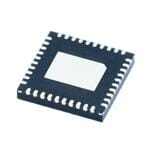
 Datasheet下载
Datasheet下载

